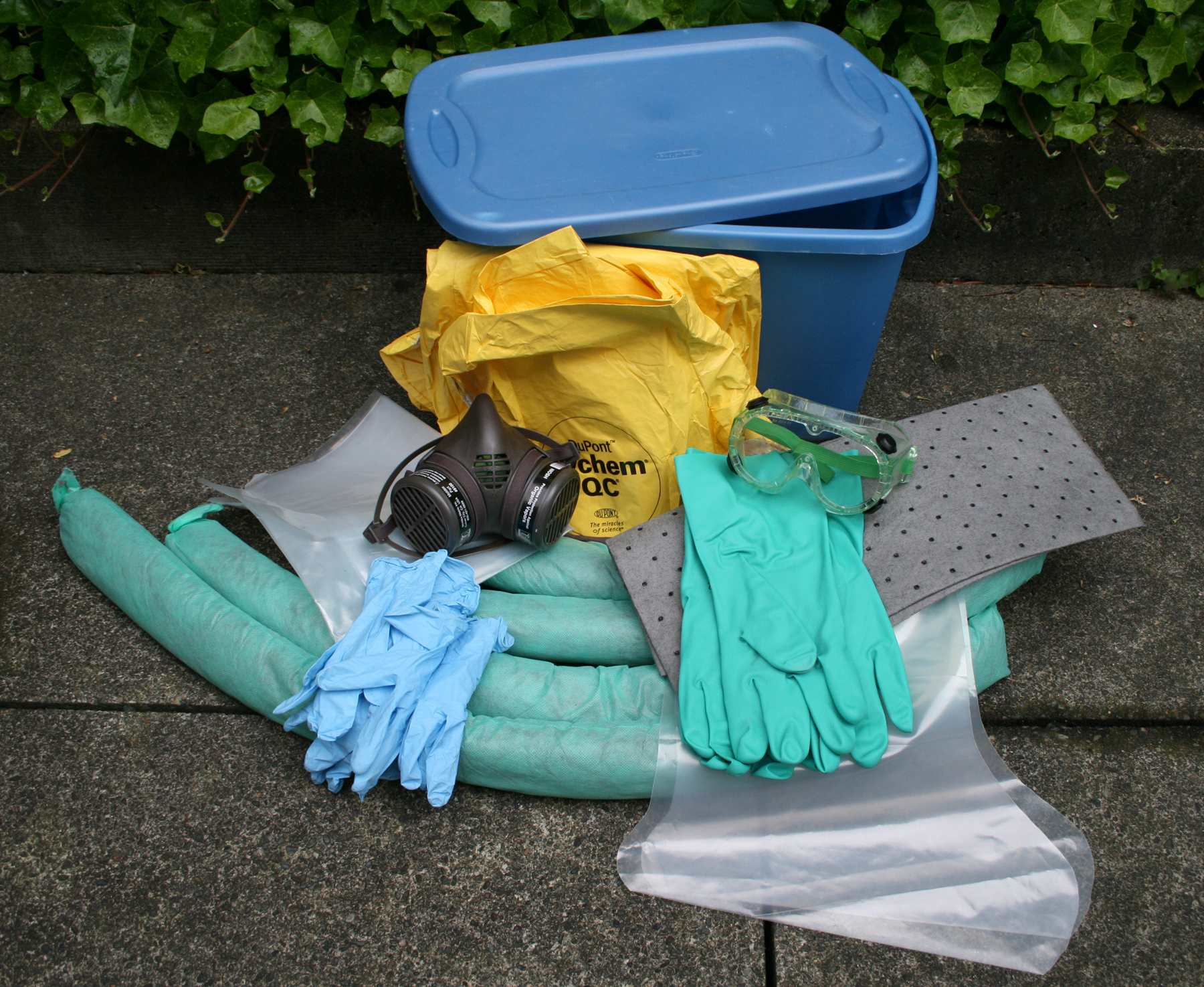
Photo by: Kit Galvin
 Idea...
Idea...
We wanted to contain all spills whether it was on the floor or on the shelves. We first started putting liquid or granular products in large Ziploc bags then storing them in tubs. After a few years we added absorbent material on the bottom of the tubs. There was an initial cost, but it was well worth it. It takes away a big hazard.
 Setup & use
Setup & use
- Install shelves made of non-absorbent materials such as metal, or covered with epoxy-based paint or a rubber lining
- Select trays or tubs with enough capacity and strength to contain spilled chemicals
- Ensure that the tub or tray material is compatible with materials
 Tips
Tips
- Use WSDA approved signs for labeling chemical storage
- Replace trays and tubs when cracks start appearing
- Cat litter can be used as absorbent and disposed of according to the pesticide label
- Ensure the company spill response plan and training is up-to-date
- Conduct mock spills with non-toxic materials to train handlers how to clean up a spill
 Alert
Alert
Store dry chemicals on shelves above liquid chemicals and store heavier containers on lower shelves. Wear gloves when handling pesticide containers.
 If you have a spill
If you have a spill
- Keep a spill kit close to pesticide storage (and mixing) areas.
- Follow your workplace spill response plan for cleaning up chemical spills.
- Wear the PPE as required by the label for the spilled product.
- Place each leaky container into a clean tub or tray, clean up the spill, and decontaminate.
- Dispose of spilled product and absorption materials as hazardous waste.

Resources
Cornell University
University of Florida Extension
Oregon OSHA
We hope that you will be inspired you to incorporate solutions into your own training style, develop your own hands-on teaching tools, or discover new practical solutions. We hope that you are inspired to use these solutions in your workplace. Did you try one of the practical solutions or develop a new one? We would appreciate hearing about your ideas and experiences.
Thank you and safe pesticide handling,
PNASH
Contact your state agency for more information on WPS regulations. The content of this website is for informational purposes only. It may need modification to fit your needs or it may not be appropriate for your workplace. Safe use of these solutions is your responsibility. The University of Washington and the Pacific Northwest Agricultural Safety & Health Center is not responsible for any loss or damage resulting from the use of the information provided on this website.
PNASH Project 2016-2021 (CDC/NIOSH Cooperative Agreement # U54 OH007544)
Contact us
Project Email:
PractSol@uw.edu
Project staff:
Maria Tchong-French (habla español)
206 685-6728
